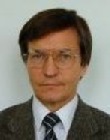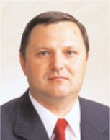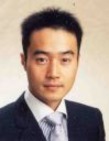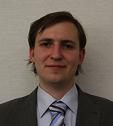 |
 |
 |
 |
Professor |
Associate Professor |
Assistant Professor |
Assistant Professor |
 |
|||
Visiting Researcher |
Existing systems of symbols and notations are usually very abstract and there is a great gap between the form and meaning of data/knowledge. Our long-term education, in an essential part, is reduced to training our brain for being ’encoding-decoding Emachine bridging this gap. The abstractness mentioned and bridging operations are sources of serious mental and physical problems for a great variety of people and, especially for disabled and elderly. Our aging society is also becoming information society. So, the above-mentioned aspect of our environment is becoming crucial. That is why, our research is to develop a new environment with lesser level of abstraction and with the better quality of people life. Our general program is cyber-infrastructure including high-performance computing. We are also thinking about active knowledge being developed by humanity and undertaking research efforts in visual (multimedia) languages and tools, parallel and distributed systems. In a great part, our research and development are based on an idea of selfexplanatory components in a cyberFilm format. A cyberFilm is a set of color stills supported, if necessary, by text, voice/sound and special links. Each still is to represent a view (some features) of objects or processes. Each cyberFilm is to represent a multiple view (an extended set of dynamic and/or static features) of objects or processes. The more accurate and relevant views are used, the greater adequacy is reached. The idea of cyberFilms is used for the specification of information resources and programming operations with the resources, as well as for the representation of multimedia messages and implementation of human-computer interfaces. The idea of equal opportunities to all individuals in the use of information resources is used to create a right set of cyberFilms and methods of their adaptation. We lead four clusters of projects related to filmification of methods and data: 1) Active Knowledge Studio for teachers, students, and programmers, 2) Semantic Surfaces in Ambient Living Environments for elderly, 3) Virtual objects, haptic interface and 3D printers for people doing fast prototyping, and 4) WWW-based software for users involved in multimedia programming and distance learning. |
Refereed Journal Papers
| [mozgovoy-01:2009] |
T. Kakkonen, and M. Mozgovoy. Hermetic and Web Plagiarism
Detection Systems for Student Essays Ean Evaluation of the State-of-theart.
Journal of Educational Computing Research, 42(2):135 E59, 2010. |
| Plagiarism has become a serious problem in education, and several plagiarism detection
systems have been developed for dealing with this problem. This study provides
an empirical evaluation of eight plagiarism detection systems for student essays. We
present a categorical hierarchy of the most common types of plagiarism that are
encountered in student texts. Our purpose-built test set contains texts in which instances
of several commonly utilized plagiaristic techniques have been embedded.
While Sherlock was clearly the overall best hermetic detection system, SafeAssignment
performed best in detecting web plagiarism. TurnitIn was found to be the
most advanced system for detecting semi-automatic forms of plagiarism such as the
substitution of Cyrillic equivalents for certain characters or the insertion of fake
whitespaces. The survey indicates that none of the systems are capable of reliably
detecting plagiarism from both local and Internet sources while at the same time
being able to identify the technical tricks that plagiarizers use to conceal plagiarism. |
|
| [nikmir-01:2009] |
Yutaka Watanobe, Rentaro Yoshioka, and Nikolay Mirenkov. Algorithm
Library based on Algorithmic CyberFilms. Journal of Knowledge-
Based Systems, 22(3):195 E08, 2009. |
| A library of algorithms developed as algorithmic cyberFilms is presented. Algorithmic
cyberFilms are a new type of software components for presentation, specification/
programming and automatic code generation of computational algorithms.
The algorithmic cyberFilm format is implemented as a set of multimedia frames
(and scenes), and each component is represented by frames of algorithmic skeletons
representing dynamical features of an algorithm, by frames of integrated view providing
static features of the algorithm in a compact format, and by corresponding
template codes supporting the program generation. We developed a library which
is a collection of basic and advanced algorithms taught at universities, including
computation on grids, trees and graphs. In this paper, we present basic constructs
of visual languages which are used for representing cyberFilms as well as for demonstrating
the library components. We also provide a general overview of the library
and its features. In addition, we discuss results of experiments which were conducted
to verify the usability of the library components and their usefulness in education. |
|
| [nikmir-02:2009] |
Nikolay Mirenkov, Kamen Kanev, and Hiroshi Takezawa. Mobile music
therapy with multimedia quality of life supporters for elderly and disabled.
Journal of Mobile Multimedia, 5(1):29 E4, 2009. |
| Music therapy addresses physiological, cognitive, and social needs of individuals
and employs music to enhance quality of human lives through creation of positive
changes. In this paper, we consider applying music therapy to human-computer
interfaces, based on Quality of Life Supporters (QLS) of self-explanatory type, and
oriented to elderly and disabled people. QLS are multi-modal communicators for
person-environment (P-E) fit adjustments that take into account individual emotions
and wellbeing. The Circumplex model published by Russell (1980) is employed for
constructing optimal sequences of steps allowing smooth transition between any
current and target emotional states in the course of computer assisted sessions.
Findings regarding optimal step sizes and preferable types of music applicable for
each step, as well as empirical methods of acquiring knowledge concerning relations
between music and emotions are reported in result. |
|
| [vazhenin-01:2009] |
M. Lavrentiev-jr, A. Romanenko, V. Titov, and A.Vazhenin. High-
Performance Tsunami Wave Propagation Modeling. Lecture Notes in Computer
Science, E698 E423 E34, 2009. |
| Strongest earthquake of December 26, 2004 generated catastrophic tsunami in Indian
Ocean. This shows that, in spite of recent technology progress, population at
coastal zone is not protected against tsunami hazard. Here, we address the problem
of tsunami risks mitigation. Note that prediction of tsunami wave parameters at
certain locations should be made as early as possible to provide enough time for evacuation.
Modern computational technologies can accurately calculate tsunami wave
propagation over the deep ocean provided that initial displacement (perturbation of
the sea bed at tsunami source) is known. Modern deep ocean tsunameters provide
direct measurement of the passing tsunami wave in real time, which help to estimate
initial displacement parameters right after the tsunami wave is recorded at one of
the deep ocean buoys. Therefore, fast tsunami propagation code that can calculate
tsunami evolution from estimated model source becomes critical for timely evacuation
decision for many coastal communities in case of a strong tsunami. Numerical
simulation of tsunami wave is very important task for risk evaluation, assessment
and mitigation. Here we discuss a part of MOST (Method of Splitting Tsunami)
software package, which has been accepted by the USA National Ocean and Atmosphere
Administration as the basic tool to calculate tsunami wave propagation and
evaluation of inundation parameters. Our main objectives are speed up the sequential
program, and adaptation of this program for shared memory systems (OpenMP)
and CELL architecture. Optimization of the existing parallel and sequential code for
the task of tsunami wave propagation modeling as well as an adaptation of this code
for systems based on CELL BE processors (e.g. SONY PlayStation3) is discussed.
The paper also covers approaches and techniques for programs optimization and
adaptations, and obtained results. |
Referred Proceeding Papers
| [mozgovoy-02:2009] |
M. Mozgovoy, and T. Kakkonen. An Approach to Building a Multilingual
Translation Dictionary that Contains Case, Prepositional and Ontological
Information. In Proceedings of the 12th International Conference on
Humans and Computers, pages 135 E39, 2009. |
| In the multilingual reality of the modern world the task of translational electronic
dictionaries development remains highly important. Many existing computer-based
dictionaries lack the following features: (a) the availability of both machine-readable
and human-readable for-mats; (b) strict formal definitions of phrase contexts that
mandate specific translations. The current work addresses these issues by suggesting
a new approach that incorporates formal definitions of a phrase context that is based on EuroWordNet-style ontological in-formation. The proposed dictionary will enable
the selection of the correct translation of a word in a given context, and will
thus be suit-able both for human use and NLP tasks. |
|
| [nikmir-03:2009] |
K. Kanev, N. Mirenkov, B. Brimkov, and K. Dimitrov. Semantic Surfaces
for Business Applications. In Proceeding of International Conference
on Software, Services and Semantic Technologies, pages 36 E3, Sofia, 2009. |
| In this paper we introduce the concept of semantic surfaces - surfaces which are enhanced
to provide additional information to the one visible, and are able to interact
with the user. We consider several approaches to their implementation and in particular
show the perspectives of the CLUSPI technology developed and patented by
one of the authors. Various business applications of semantic surfaces are outlined
which illustrate the potential of the proposed concept. |
|
| [nikmir-04:2009] |
K. Dimitrov, K. Kanev, and N. Mirenkov. Semantic Surfaces in Ambient
Assisted Living Environments. In Proceedings of The 1st International
Workshop on Aware Computing, IWAC09, pages 717 E722, Aizu-
Wakamatsu, Dec. 2009. |
| Ubiquitous, context-aware systems and tangible interfaces are the technologies that
have the potential to address the specific needs of the rapidly growing elderly population.
To tackle the aging society problem, the European Union (EU) has created
a special Ambient Assisted Living (AAL) Joint Program and initiated several big
research projects. In this work we are attempting to address some technological
aspects of the AAL by considering innovative methods and facilities for ambient
information control. The idea is to attach spatial connotation to surfaces that surround
us and thus to create semantic surfaces for direct ambient interactions. The
invisible intuitive support of the semantic surfaces could make the difference in the
lifestyle of the aging population and ensure the much needed self-confidence and
dignity of the elders. |
|
| [nikmir-05:2009, rentaro-02:2009] |
Y. Watanobe, V. Malyshkin, R. Yoshioka,
N. Mirenkov, and H. Fujita. Filmification of Methods: Representation
of Particle-In-Cell Algorithms. In Proceedings of the 10th International
Conference on Parallel Computing Technologies (LNCS 5698), pages
360 E76, Novosibirsk, Sep. 2009. |
| Filmification of methods is an approach to find new formats for program and
data/knowledge representation. It is also to create a basis for specifying and developing
a new generation of programming environments. Within this approach
various algorithms are analyzed and represented as cyberFilms where special visual
super-symbols (icons) are introduced for defining meaning of the cyberFilm frames.
In this paper, the filmification of methods is applied for particle-in-cells algorithms.
Results demonstrate a promising compactness of the program representation, covering
technical details of parallel implementation and an effectiveness of an open set
of icons. |
|
| [nikmir-06:2009, rentaro-01:2009] |
Y. Watanobe, R. Yoshioka, S. Tsukumoto, and
N. Mirenkov. Filmification of methods: Convex Hull algorithms. In Proceedings of the 2009 IEEE TENCON Conference, pages 1 E, CDROM, Singapore,
November 2009. |
| Filmification of methods is a promising concept to find new formats for program
and data/knowledge representation. It is also to create a basis for specifying and
developing a new generation of programming environments, as well as for introducing
new types of educational materials. Within this approach various algorithms
are analyzed and represented as cyberFilms where special visual constructs, supersymbols
and background images are introduced for defining and explaining meaning
of the cyberFilm frames. In this paper, the filmification of methods is applied to
Convex Hull algorithms. As a result, several ways to enhance the approach has been
obtained. They are based on new types of flashing (highlighting) nodes, to represent
different limitations on specifying activity on spatial structures, and special background
images and formulas to support the explanation of algorithm dynamics. |
|
| [vazhenin-02:2008] |
Tosiaki Oka, Dmitry Vazhenin, and Alexander Vazhenin. WEB-based
task management tools in e-learning environment. In Proc. of the IEEE Region
8 International Conference on Computational Technologies in Electrical
and Electronics Engineering, (SIBIRCON 2008), pages 100 E05. IEEE, July
2008. |
| In the presented paper, we discuss an approach implementing comfortable task
management procedures for problems or exercises requiring processing of mathematical
expressions, and providing verifications procedures not only for numerical
answers but also formulas. An on-line Task Management teacher-student collaboration
scheme is proposed. e-Learning task management components are shown
including the system database structure, Formula Engine Architecture as well as
answers verification strategies. The verifications of formula answers are based on
transforming to a unified ordered form using standard symbolic algebraic conversions.
The human/computer interface features are demonstrated including HTMLand
GUI-interfaces. |
|
| [nikmir-07:2009] |
K. Dimitrov, N. Mirenkov, and K. Kanev. Towards a World of Totally
Identified Objects. In Proceedings of the 2009 Joint Conference on Pervasive
Computing, JCPC 2009, pages 83 E8, Taipei, Dec. 2009. |
| A concept of a novel infrastructure, where all or at least a large majority of the
involved objects have their own identifiers (IDs), is introduced. The object IDs are
to secure reliable access to the various object features and corresponding data, and to
support the intelligent communication between human and computer worlds. Several
technologies for object location and identification are analyzed and semantic surfaces
are recognized as one of the most promising approaches. For the implementation
of semantic surfaces, a comparison of image codes, based on their size, surface
coverage and image density, and data capacity is conducted. Finally, a software
system, named VIDI, which supports the visualization of various digital contents
related to physical objects, is proposed and its design and organization is discussed. |
|
| [vazhenin-02:2009] |
P. Bottoni, D. Vazhenin, A. Vazhenin, and N. Mirenkov. Shape-based
computations on regular processor networks. In M. Erwig Editors R. DeLine,
M. Minas, editor, IEEE syposium on Visual Languages and Human-Centric
Computing, VL/HCC-2009, pages 165 E69, Corvallis, Oregon, USA, September
2009. IEEE, Oregon State University. |
| Spatial structures are particularly suited to the definition of parallel programs, due
to their homogeneity. The Movie-based Programming Framework allows specification
of computations on regular networks of processors, and the visualization of
the computation progress as processors are activated. Computations over spatial
structures are specified by composing independent views on propagation of control
flows and formulae defining local computations. A shape pattern indicates which
processors have to be active during a specific phase of the computation. A visit pattern
defines the law of propagation for actual processor activation. By combining
these types of patterns, we achieve sophisticated forms of specification. In particular,
one specifies visitors implementing collective communication schemas widely
used in parallel programming: broadcast, gather, scatter and reduction. As a result,
automatic generation of visit algorithms adapted to different network configurations
is made possible, thus facilitating experimentation with different laws and their visualization. |
|
| [vazhenin-03:2009] |
D. Vazhenin and A. Vazhenin. The Design and Implementation
of Movie-based Algorithms for Direct Solution of Systems of Linear Algebraic
Equations. In The 12th International Conference on Humans and
Computers,HC-2009, pages 146 E51, Hamamatsu, Japan, December 2009.
Shizuoka University. |
| The visual programming allows to fresh traditional approaches in designing algorithms
for solving not only new problems but also traditional well-known problems
such as solution of Systems of Linear Algebraic Equations (SLAE). Accordingly, we
formulate a visual representation of the SLAE solv 測ing problem using the moviebased
programming paradigm. The movie-based SLAE solution process is divided
into two algorithmic episodes each of which reflects the elimination (Forward Substitu
測tion) and back-substitution procedures correspondingly. The SLAE solvers
are classified visually ac 測cording to a way of elimination of unknowns as well
as a shape of the SLAE matrix like diagonal, triangle, etc. A description is presented
of movie-based SLAE solvers library as a collection of movie-based algorithmic
episodes. Those components can be easily embedded into the user’s movie-based
algorithmic skeleton. Examples of typical movie-based SLAE-solvers are also shown. |
|
| [vazhenin-04:2009] |
D. Vazhenin, P. R. Cortez, and A. Vazhenin. Task Verification Strategies
in e-Learning Environment. In The 12th International Conference on
Humans and Computers,HC-2009, pages 157 E62, Hamamatsu, Japan, December
2009. Shizuoka University. |
| In e-learning environment usually there exist three important components: lectures,
a set of exercises and evaluation sub-system. The main challenge of current distance
learning is to maintain face to face classroom interaction and recognize weak areas
in order to coach students in specific problem-solving activities. In the presented
paper we are focusing on Task Verification Strategies that will enhance professorstudent
interaction in e-learning environment to support understanding of subjects
that requires processing of complex expressions such as mathematics, physics and
chemistry. The main advantage of our research activities is in covering not only
numerical simple answers but also complex formula answer verification. The task
management components need to be integrated into the e-learning environment to
overcome challenges mentioned above.We review more in detail the e-learning structure,
task preparation and task verification; considering the inclusion of concurrent
verification to allow features such as problem-solving tournaments. We present an
approach of the end-users interaction, access methods, and technical aspects of its
implementation. |
|
| [vazhenin-05:2009] |
D. Vazhenin and A. Vazhenin. Movie-based SLAE Solvers with Typical
Matrix Structures. In The 3th Conference on Theory and Application of
Information Technology, pages 1 E, Tamsui, Taiwan, May 2009. Tamkang
University. |
| This paper is devoted to developing a set of movie-based solvers of systems of linear
algebraic equations (SLAE) with the typical matrix structures such as diagonal, bidiagonal,
triangular shapes. The important feature of proposed methods is the visual
algorithm representation using a movie-based approach. The user has a deal with
special multimedia objects, each of which can generate an executable code as well as produce animation frames. These objects build an algorithmic skeleton representing
the steps of computation. In this paper, the SLAE solving problem is formulated
including visual representation of the problem as well as visual classification of the
typical matrices. We discuss also main stages of the movie/program design and
debugging. |
Chapters in Book
| [mozgovoy-03:2009] |
Maxim Mozgovoy. Algorithms, Languages, Automata, and Compilers,
page 345. Jones and Bartlett Publishers, 2009. |
| [nikmir-08:2009] |
Kamen Kanev and Nikolay Mirenkov. Pervasive Carpet Encoding for
Active Knowledge Semantic Surfaces, page chapter. Ubiquitous Multimedia
Computing, Qing Li and Timothy K. Shih (Eds). Chapman - Hall/CRC Press,
2010. |
Grants
| [nikmir-09:2009] |
N. Mirenkov. Ministry of Education Scientific Research Fund, 2009-
2010. |
| [rentaro-03:2009] |
R Yoshioka. Grant-in-Aid for Scientific Research, Japanese Ministry
of Education, Culture, Sports, Science and Technology, 2009-2011. |
| [vazhenin-06:2009] |
A. Vazhenin. Grant-in-Aid for Scientific Research, Japanese Ministry
of Education, Culture, Sports, Science and Tecchnology E, 2009-2011. |
Academic Activities
| [nikmir-10:2009] |
Nikolay Mirenkov, 2009. Member, the IFIP Working Group 10.3 (Concurrent Systems) |
| [nikmir-11:2009] |
Nikolay Mirenkov, 2009. Associate Editor, the Tamkang Journal of Science and Engineering, International Journal |
| [nikmir-12:2009] |
Nikolay Mirenkov, 2009. Member of ACM and IEEE |
| [nikmir-13:2009] |
Nikolay Mirenkov, October 2009. Member of the Program Committee of the 8th International Conference on New Software Methodologies, Tools, and Techniques (SoMET-09) |
| [nikmir-14:2009] |
Nikolay Mirenkov, 2009. Member of the Program Committee, 8-th International Workshop on Algorithms, Models and Tools for Parallel Computing on Heterogeneous Networks |
| [nikmir-15:2009] |
Nikolay Mirenkov, September 2009. Member of the Program Committee, IEEE Symposium on Visual Languages and Human Centric Computing |
| [vazhenin-07:2009] |
A. Vazhenin, 2009. Co-Chair of the Program Committee, The IEEE International Conference JCPC-2009 |
| [vazhenin-08:2009] |
A. Vazhenin, 2009. Member of IEEE, ACM and IEICE |
| [vazhenin-09:2009] |
A. Vazhenin, 2009. Reviewer of the International Journals: PARCO, Elcevier and the International Journal of Computers and Applications, ACTA Press |
Patents
| [rentaro-04:2009] |
R Yoshioka. Design Patent Registered PAT.NO. 1381976, 1381977,
1381978, 1381979, 1381980, Feb. 2009. |
| [nikmir-16:2009] |
Satoru Yamaguchi. Graduation Thesis: 3D Kanji Sculptural Constructions
for City, University of Aizu, 2009. Thesis Advisor: Nikolay Mirenkov |
| [nikmir-17:2009] |
Kanio Dimitriv. Master Thesis: Semantic Surfaces in Ambient Assisted
Living Environments, University of Aizu, 2009. Thesis Advisor: Nikolay Mirenkov |
| [rentaro-05:2009] |
Kazuyuki Nakamura. Software Development Arena: Practical Project
Management Skills for Real-world Application Development, University of
Aizu, 2009. Thesis Advisor: R. Yoshioka |
| [rentaro-06:2009] |
Takanobu Sato. Software Development Arena: Practical Project Management
Skills for Real-world Application Development, University of Aizu,
2009. Thesis Advisor: R. Yoshioka |
| [rentaro-07:2009] |
Takayuki Shibata. Software Development Arena: Practical Project
Management Skills for Real-world Application Development, University of
Aizu, 2009. Thesis Advisor: R. Yoshioka |
| [rentaro-08:2009] |
Jun Igari. Graduation Thesis: CyberFilm for Computation Based on
Finite Difference Method, University of Aizu, 2009. Thesis Advisor: R. Yoshioka |
| [rentaro-09:2009] |
Kazuaki Sakuma. Graduation Thesis: CyberFilm for Computation on
Moving Particles, University of Aizu, 2009. Thesis Advisor: R. Yoshioka |
| [rentaro-10:2009] |
Nobuhiko Hishinuma. Graduation Thesis: CyberFilm for Computation
Without Dominating Structure, University of Aizu, 2009. Thesis Advisor: R. Yoshioka |

2011 THE UNIVERSITY OF AIZU ALL RIGHTS RESERVED